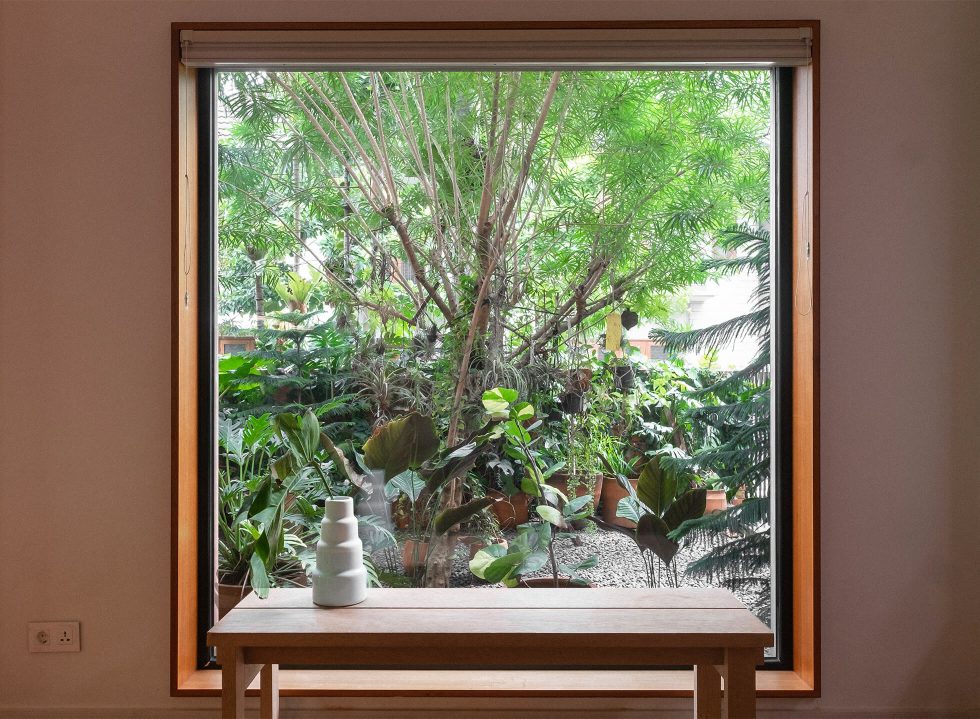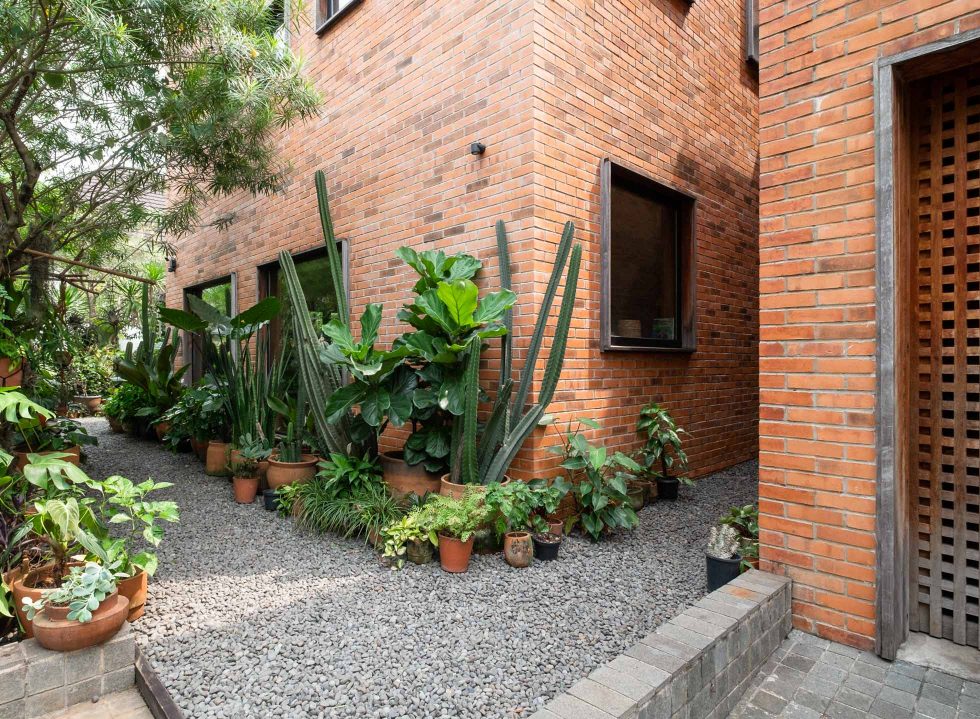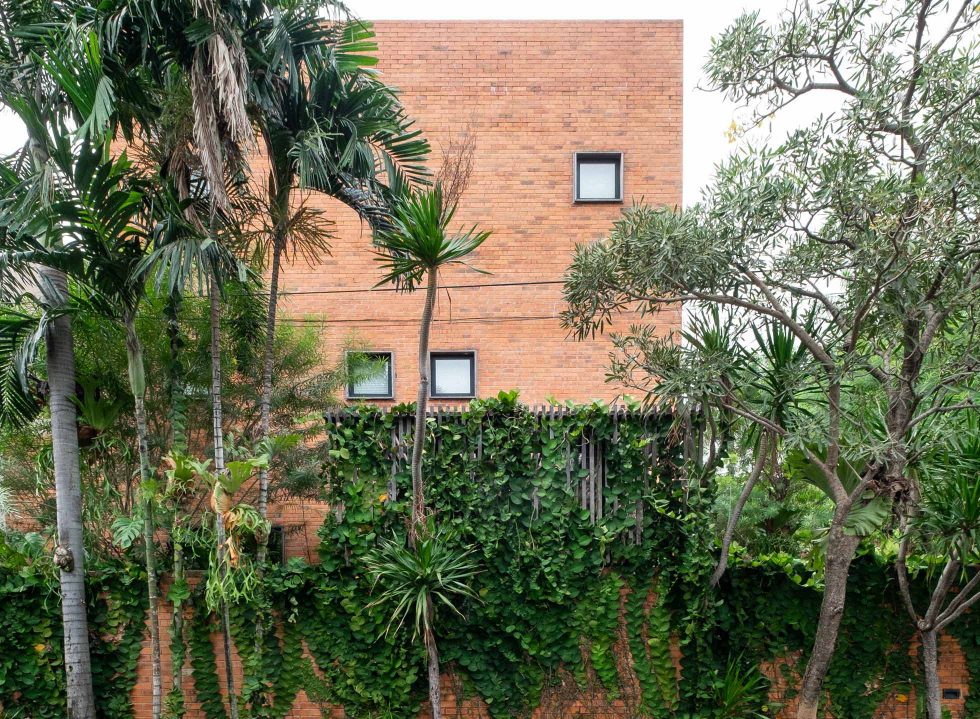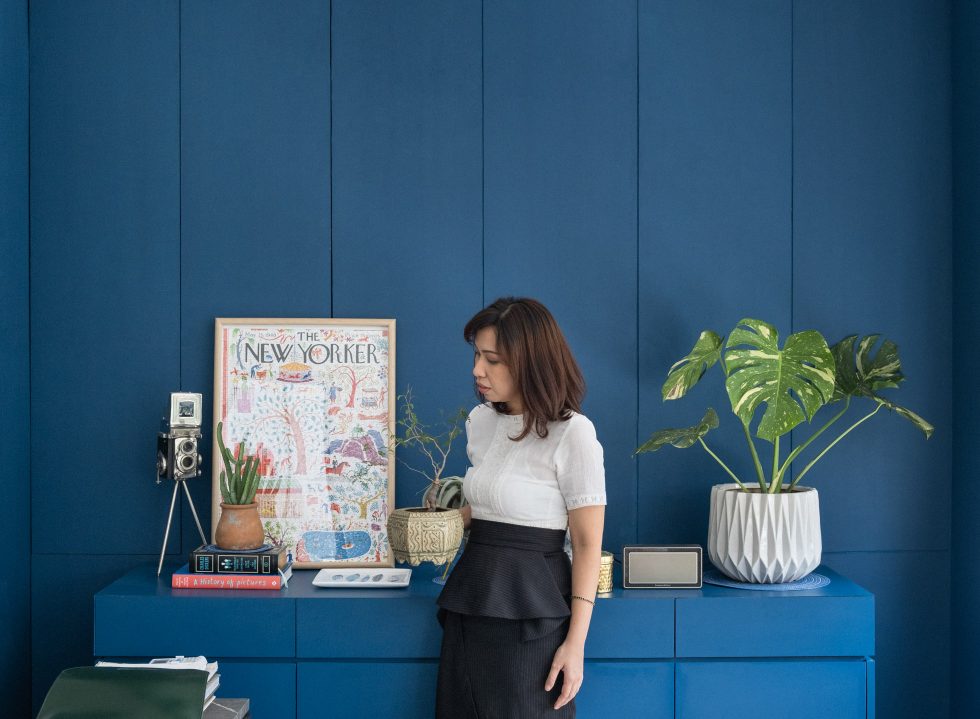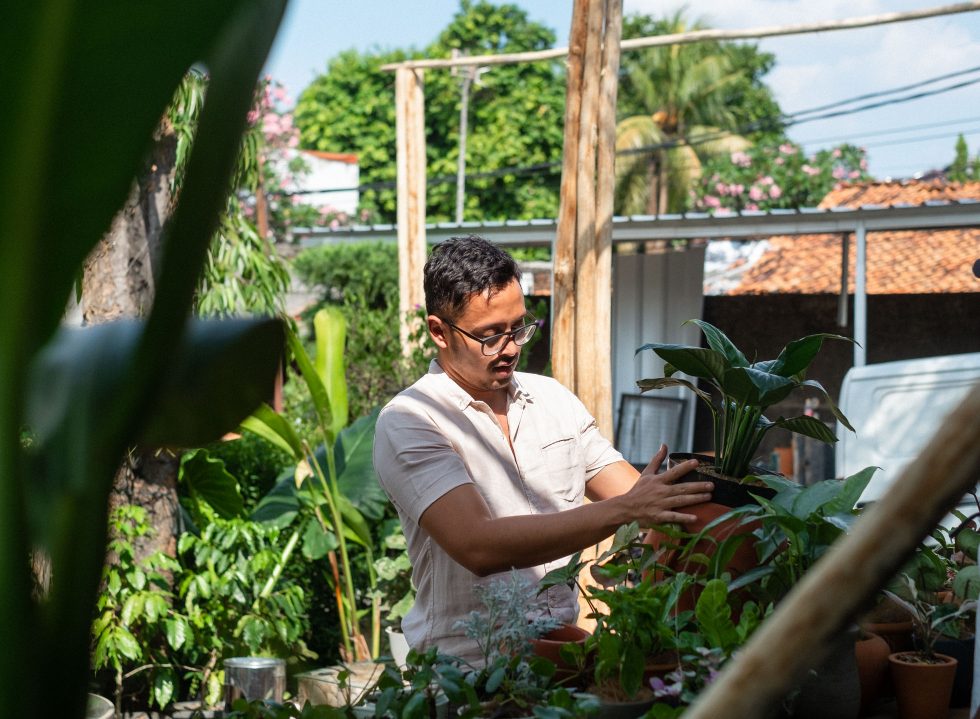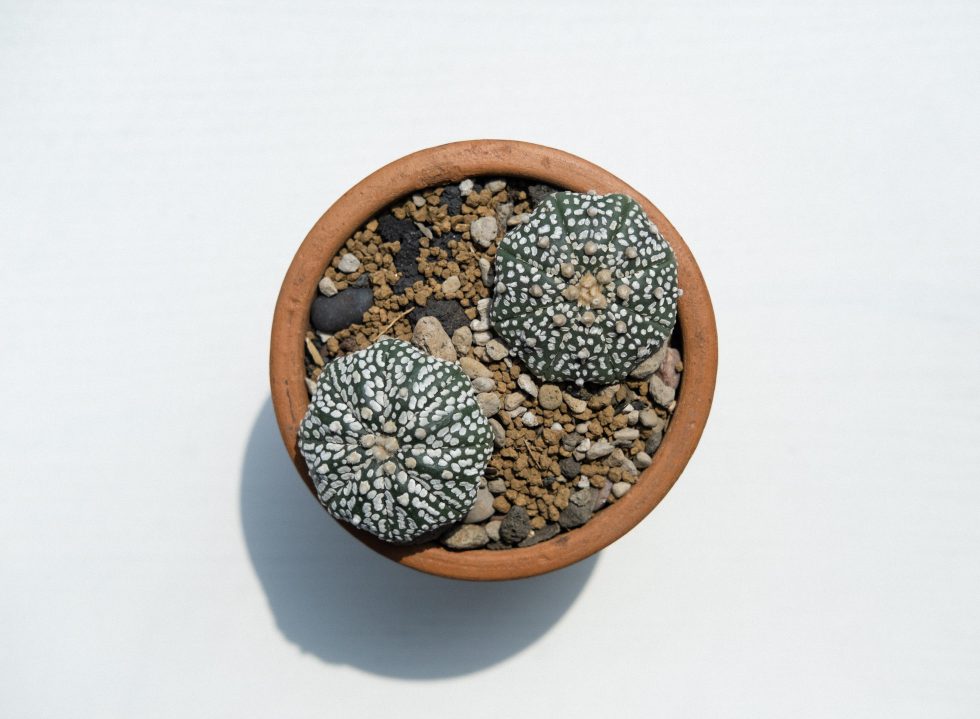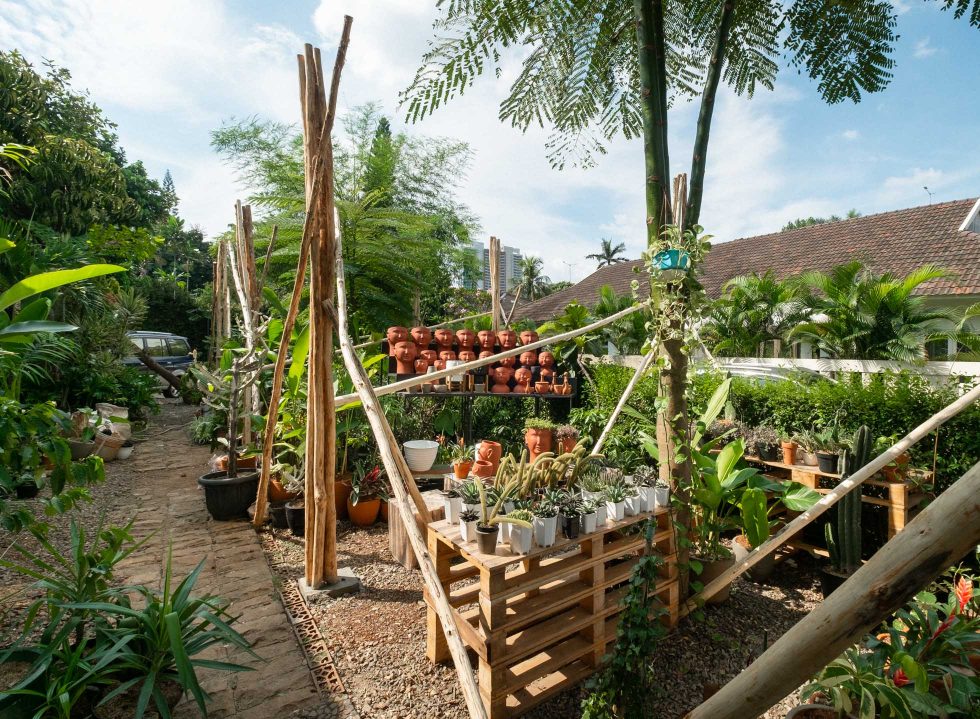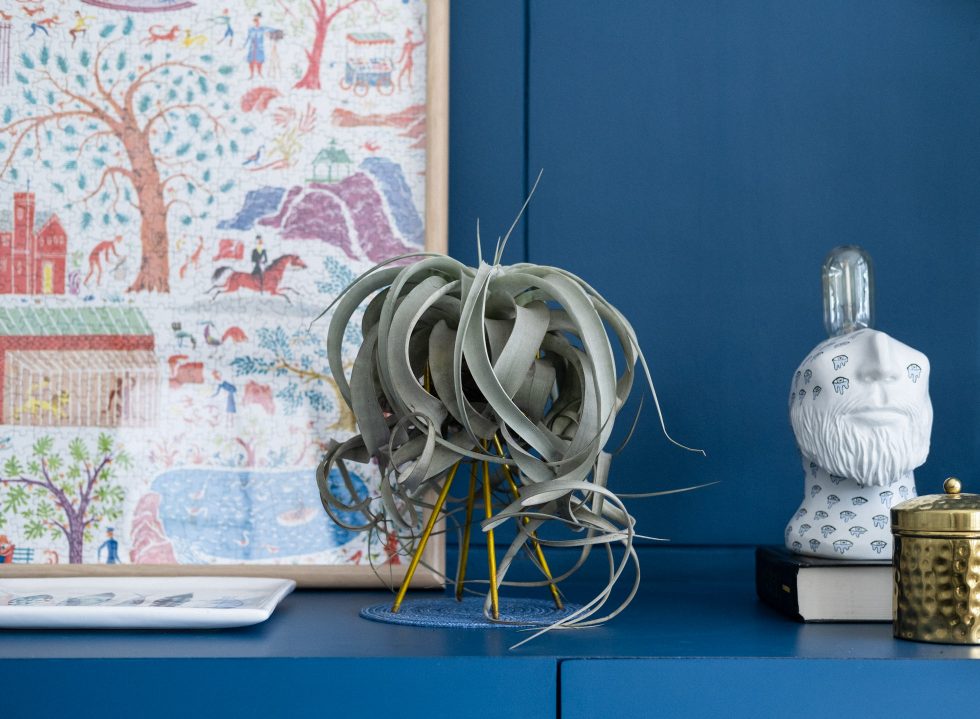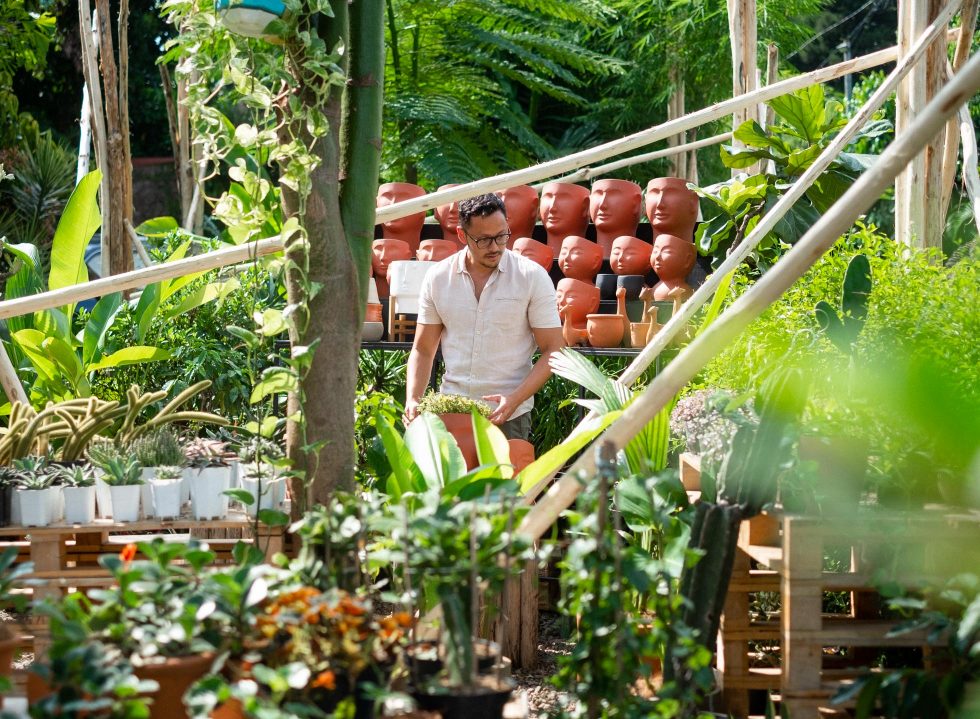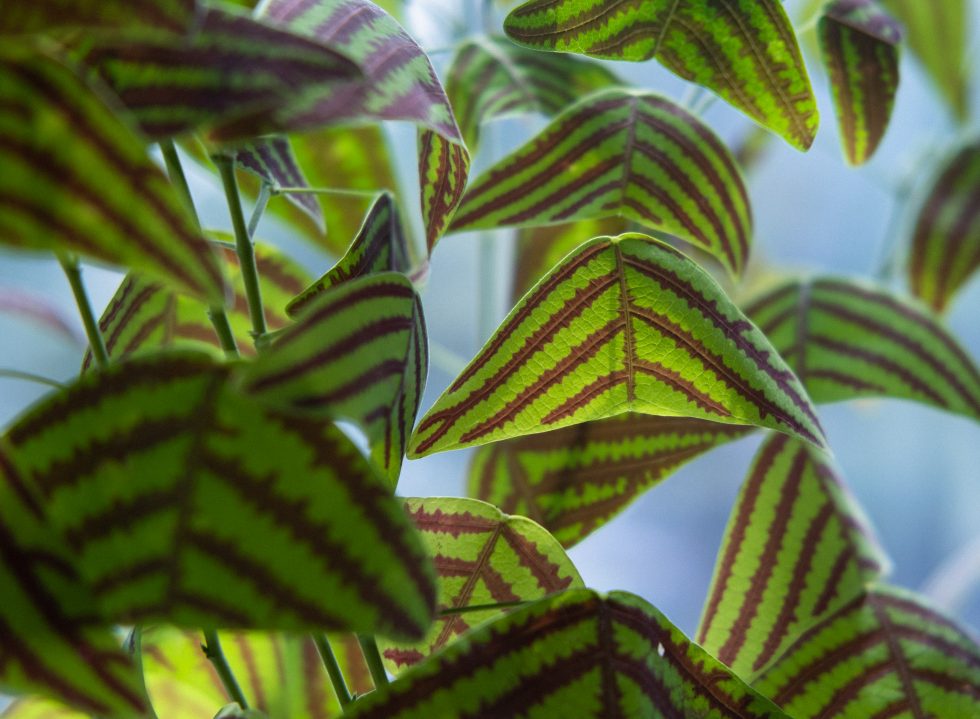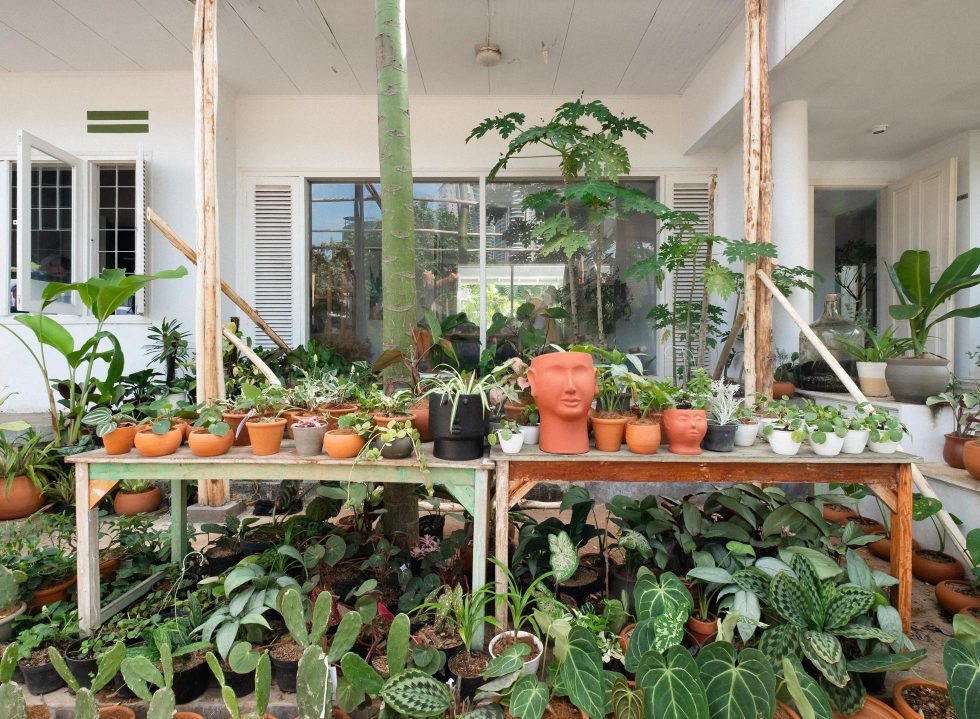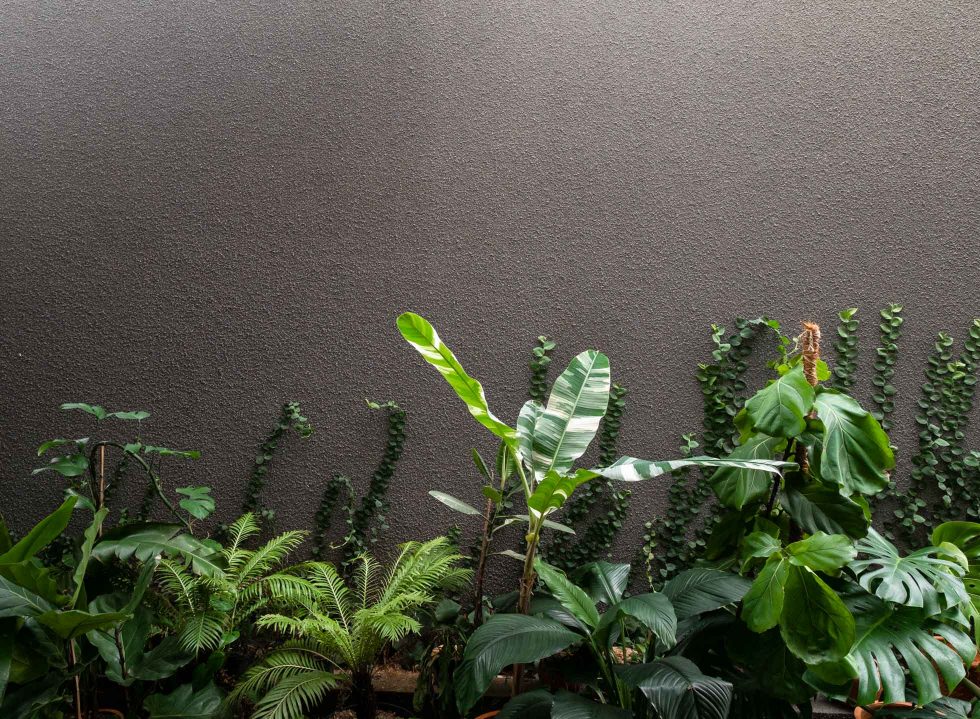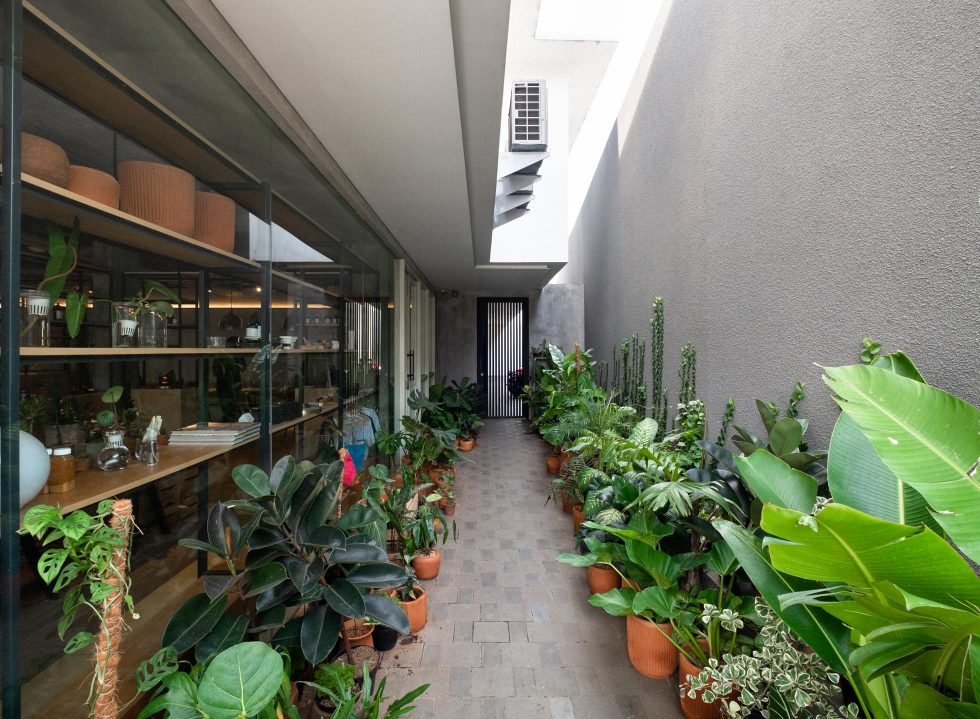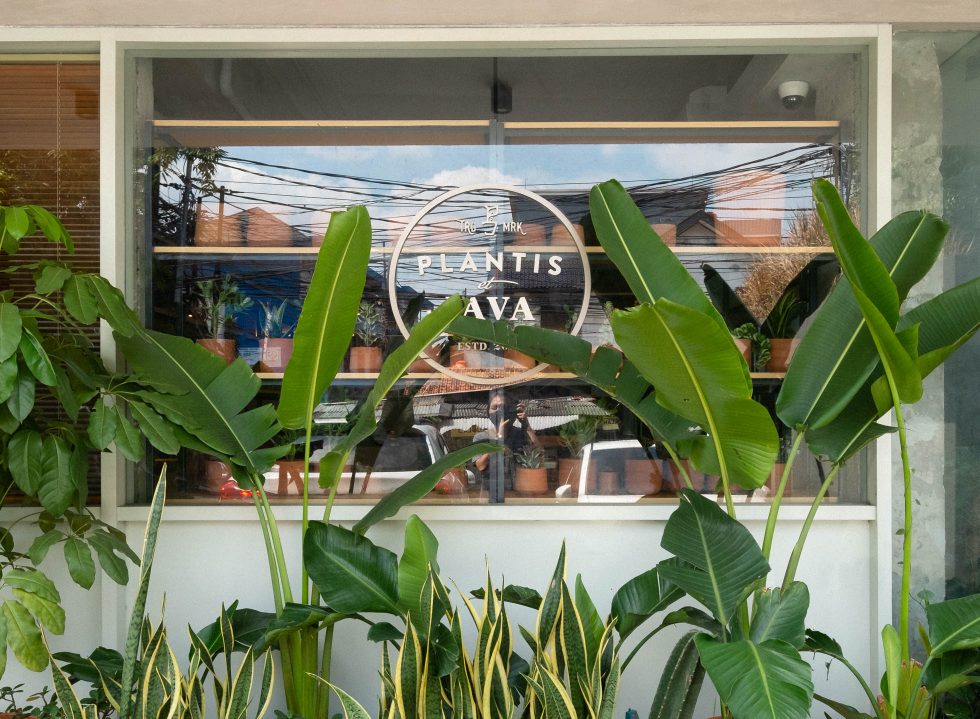Nathalia Gunawan, a mother-of-three and the woman behind 1/15 Coffee, recalls how her family hauled her into the plant life: first, Lia witnessed how her mom devoted her days tending to her sprouting collections of plants, then, her sister taught her how to grow them properly in her barren garden, now loud with foliage of all kinds. “It’s a jungle out there,” stated Lia in her email, which consists mostly of stories about her garden, to which she dearly regards as her personal space.
Though gardening was never perceived as a pastime associated with the young, Lia is not the only one whose love for plants was deeply influenced by her family since she was little.
Tania Satriyo, or Plantestanic, as her mass following on Instagram knows her, shared about how her mother suddenly turned to a passionate plant collector when she was pregnant with Tania. As if in her blood, gardening and cultivating plants became her ‘way of life,’ as she put it.
Today, fetching snapshots of ceramic-potted philodendrons and variegated calatheas (which both Lia and Tania probably own about a hundred) grace the Instagram pages. The revived trend, further induced by the ‘plantfluencers’ (an abbreviation of plant influencers) on social media, has swept parts of the world with tropical indoor plants rising to stardom, resulting in our own country being highlighted and celebrated amidst this green renaissance.
Don’t be surprised if you find fellow plantfluencers from around the world shriek in excitement as they unbox their new plants cultivated from Indonesian soil. Blessed with a wealth of flora, the current state of gardening looks more like a shift rather than a novel trend, and as we unpack it, the plant renaissance bears more than it seems to nurture back a love for nature.
The urban jungle
“I grew interested [in plants] during my childhood” shared Tania. Little did her followers know, she juggles between back-to-back meetings and making negotiations as a co-founder of an electrical and renewable energy company when she’s not caught up with her plant-babies.
Unlike her childhood peers, she found solace in collecting unique plants and flowers. But her love for nature didn’t stop there, even when her curiosity once led her to the hospital for accidentally eating a poisonous flower when she was nine years old.
Now, 250 kinds of plants make a jungle in her home and office. Her collection spans from popular Philodendrons, Tillandsias, succulents to the endangered Adansonia, Madagascar’s ‘Tree of Life.’ “We are naturally yearning for connection with mother nature that is now missing from our everyday life. Growing plants, indoor or outdoor, at home or at the office, can be a coping mechanism because it is not as easy to go out and enjoy nature as it was years ago.”
A collective longing for nature has brought back the plant culture into the modern lifestyle: Gardening is not merely a hobby—it is a response to a life where nature is missing. “Nowadays, most urban dwellers live in apartments or small houses with very limited space, it’s such a rewarding feeling to have a small green corner and to watch [the plants] grow well,” expressed co-owner of Larch Studio, Satya Putra.
Tanema, a plant store and sister company to Larch Studio, experienced a significant increase in orders for house plants like Anthuriums and Philodendrons—an upsurge that other local-based plant sellers Plantis et Java and Greenspaces.id can resonate with.
But the revival brings forth a larger focus on potted leaves than flowers, “Personally I’m team leave-plants than team flower, because I can enjoy [plants] every day. They last longer with easier maintenance. Meanwhile, flowers are quite peculiar with conditions that allow them to bloom well, and most of them are perennial plants. In short, flowers require high maintenance,” Satya explained.
While the extra care remains the main reason, to some, it is the unpretentious shades of foliage that win them over. “[A higher interest in plants] comes with various reasons, but mainly we believe that plants are more popular because most of their parts come in shades of green. Such hue is not just considered as neutral and easier to blend with any surrounding, but it also has a strong association with nature,” said Ago Dirhamsyah, co-founder of plant mercantile Plantis et Java.
“It brings a sense of tranquillity. Its calming and peaceful effect is thought to relieve stress and help heal,” he added on the searing interest towards plants amidst the urban landscape.
Alas, Satya and the family of Larch Studio cater to this with a mission; “We tend to not follow the trend. Instead, we try to educate our customers on how to keep their plants healthy and lively.”
“If we look at the current situation, more companies try to incorporate a back-to-nature approach in their design because they are aware that a comfortable and beautiful environment has become a necessity.”
Nature in design
In the past year, dozens of establishments and companies boast nature-infused architectures and surroundings, a testament to how businesses support and further influence this progression. To Satya, who is a landscaper and proud ‘tree hugger’ whose studio (Larch) has designed for Katamama, _Oeang, and BEAU Bakery, this collective endeavour is a statement in itself; “If we look at the current situation, more companies try to incorporate a back-to-nature approach in their design because they are aware that a comfortable and beautiful environment has become a necessity.”
In a lifestyle where one has to bear the stress caused by traffic, poor air quality and work on a daily basis, a fresh air and greener view, even within confined spaces, offer a sense of relief that separates us from the fast-paced nature of the urban lifestyle.
With landscaping being acknowledged as a modern profession and bigger companies taking part, we are shown that perhaps the cause for a greener consciousness is not lost. “[Companies] are starting to be aware of these findings, so they try to create a positive and healthy environment by bridging architecture and nature through their design concept.”
Challenges of living in the urban environment are also addressed through works by respected Indonesian architects; one can see this in establishments notorious for their lush, open-air settings such as Cork & Screw County Club, designed by Andra Matin, or the multidisciplinary art and cultural centre Anjung Salihara, designed by Danny Wicaksono of studiodasar.
“Plants are not just visually pleasing,” commented Ago, whose mission to establish Plantis et Java sprouted from his yearn for nature. “They also stimulate positive life energy. With such a benefit, we feel the need to counterbalance our urban lifestyle by bringing mother nature closer to us, and that is through incorporating a green oasis in an urban setting,” he went.
“We certainly hope such interest is a real change that could go beyond just a trend,” he concluded.
“Growing plants, indoor or outdoor, at home or at the office, can be a coping mechanism because it is not as easy to go out and enjoy nature as it was years ago.”
An act of resilience
Though indoor gardening isn’t particularly new, the revival of this hobby could not be more timely. Under today’s climate crisis aggravated by deforestation and industrialisation, to nurture a plant of one’s own seems like an act of resilience.
Tania, who cherishes growing her plants from the seeds rather than buying mature ones, remarked that the trending hobby could be a stepping stone to raising awareness towards climate change. “I believe that the trend of nurturing plants, especially in social media, has a big part in raising awareness of global warming through impacting more people to incorporate nature in their daily lives.”
Ago is convinced that the striking interest in gardening today, casts a brighter light on the environmental damage that is constantly worsening, “[The world] is becoming overcrowded and over-polluted. Humans or industrialism are taking over. That is why people need to slow down and press the pause button. Plants provide that.”
There’s a certain emergence in adopting this practice in the present climate. And thanks to social media, even the ‘unconscious’ is getting more informed about these environmental issues. “It’s a movement, in my opinion. More and more people became conscious of climate change. We become aware of what kind of food that we eat, environmentally friendly gadgets, non-plastic use and so on, including how designers incorporate nature in buildings and spaces,” expressed Satya.
Though the current state of gardening bears a modest scale, the amount of young people continuously participating in this wave is proof that no movement is ever too small.
Ago revealed that their biggest customers are mostly millennials, followed by the older generation and expatriates. “We believe such growing interest is a result of more and more people appreciating the benefits of creating a green environment and being aware of the key issues in our modern lifestyle. This is a promising sign, and we are glad that we could somehow be a part of the progress of this green movement.”
Greenspaces.id, a plant shop and nursery that started as a platform to help local farmers, also stated that “more than 90 per cent of our customers are women ranging in the age of 25-55 years old.” Their clients include plant collectors and communities from other countries, with consumers from “Europe, America and some countries in Asia” making the most orders.
“We are very fortunate to be in the tropics traversed by the equator, so we have a lot of germplasm. This is what makes Indonesian plants very attractive to plant enthusiasts,” continued Aji Samba, coordinator of Greenspaces.id.
Whether one is driven by aesthetics or the global climate crisis, “any kind of action to preserve nature is one of the ways we can help slow down the impact of climate change,” Tania remarked.
As a society living in the ever-progressing urban sphere, we have come full circle from neglecting a green environment, turning our heads to the age of modernisation—which has successfully altered our relationship with nature—to longing back for a world with a cleaner, healthier landscape.
And knowing that a truly ‘green’ world is no longer possible, we then strive to make it better by recreating nature that is more achievable, even if it’s inside our homes. A humble sign that a greener, conscious future has never been more missed.
